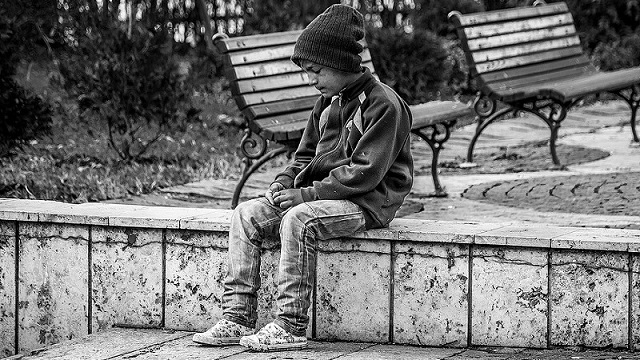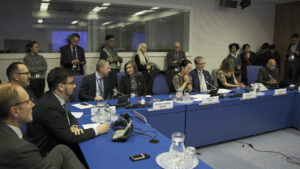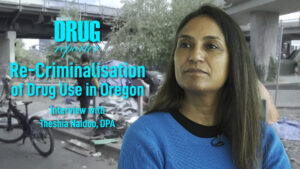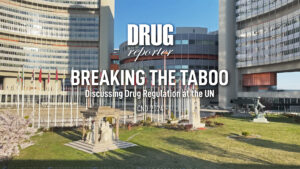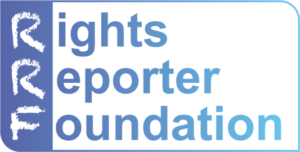An image from the centre of Skopje: Children, barely five years old, walk around the park, holding a bag, pressing it to their faces from time to time to inhale. Healthy Options Project Skopje fights for available treatments for these kids thus for their lives.
Because of the lack of treatment programs, four of the children whom the HOPS team met in the course of outreach work have passed away as a result of drug use. HOPS has also documented three further cases of children who use drugs, and took action to try to procure access to treatment – which was not ultimately provided.
An image from the centre of Skopje: Children, barely five years old, walk around the Park of the Female Freedom Fighter, holding a bag, pressing it to their faces from time to time to inhale. Crowds of people hurry past them, never turning back to look at the children; one would think such a scene was quite common and normal.
We have been witnessing this picture for more than 15 years, and yet these children are still on the streets, still inhaling glue, some even injecting heroin. In the course of our work, we have encountered 85 of these children. The youngest we have met who injects heroin is 8 years old, while the youngest inhaling is just 3.
Research conducted in 2012 for a paper entitled “Overview of the system for treatment of children under 18 years of age who use drugs” showed that in 2011, the Tetovo Educational Correctional Institution housed seven children who used drugs; the Ranka Milanovic Institute for the Care, Upbringing and Education of Children and Young People housed fifteen; and according to data issued by the Ministry of Labour and Social Politics, there were twenty children in Skopje who used drugs. 2015 data from the Institute for Social Activities show that the Social Work Centres in Macedonia had been in touch with thirteen children who used drugs.
According to 2015 research conducted by ESPAD among 2,428 16-year-old students, 14% of respondents had used marijuana, 7% had used ecstasy, 6% cocaine. These numbers show a marked increase in drug usage, compared to the 2012 study conducted among 1,146 students of the same age-group.
In addition, according to data from the Clinic for Toxicology, 42.2% of the opioid overdose interventions between 2001 and 2005 related to minors.
The country lacks a system for monitoring the condition of children who use drugs – hence there is no accurate information on their number. The data is partial, some of it very old, and derived either from outreach work or research. In 2016, for the purposes of regional research, data was collected on adolescents at risk, some of whom used drugs. The research shows that these children are not recognised within the system, and that apart from social institutions (which gather partial data) there is no data available. Even this partial data is alarming enough.
Furthermore, Macedonia still lacks treatment programs for children who use drugs – i.e. the competent institutions have failed to provide an appropriate response, in the form of integrated programs with qualified, suitably-trained staff – not just for treatment, but also for re-socialisation and rehabilitation.
Ever since 2012, the Ministry of Health has been working on issuing a protocol for the treatment of children who use drugs. At the beginning of 2015, they announced that the protocol had been drafted. It has still, however, not been adopted.
In theory, according to the current Protocol for Substitution Therapy Treatment (methadone and buprenorphine), the existing prevention and treatment centres for people who use drugs offer treatment for children under the age of 16; in practice, however, according to data received from the centres during the period 2012‒2014, no-one below the age of 18 has been admitted to methadone or buprenorphine treatment. The health institution which provides methadone substitution therapy for adults does not accept children, because of an institutional barrier: According to its statute, it can only provide services to adults. On the other hand, the institution where buprenorphine therapy is provided requires children to first be psychiatrically evaluated, which creates another institutional barrier, since there is no agreement as to the competent agency to provide that evaluation.
Because of the lack of treatment programs, four of the children whom the HOPS team met in the course of outreach work have passed away as a result of drug use. HOPS has also documented three further cases of children who use drugs, and undertook action to try to procure access to treatment – which was not ultimately provided.
In the first case, in 2009, (an 11-year-old child who had been injecting heroin for 2 years) the clinics first refused to admit the child, claiming the case was outside their competence – only to request that the child be returned home, after having admitted him to the Clinic for Children’s Diseases, due to the child’s “behaviour”. Because of the parents’ insufficient motivation and fear, the child was returned to his home. In a second case (2011 and 2012 – an 11-year-old child, contacted for the first time at 8, the age when the child began injecting heroin) inadequate care resulted in the child being placed in a wheelchair. The latest case has highlighted all the institutional barriers children face when they seek treatment. A 16-year-old girl, who was pregnant and living on the street, lost her child, after waiting for three weeks for the Social Care centre to obtain consent for treatment from her father, to whom she hadn’t spoken for a long time. Subsequently, the institutions couldn’t agree on a psychiatrist competent to carry out the evaluation required for the girl to be enrolled on buprenorphine substitution therapy. After all this to-ing and fro-ing, the girl lost motivation, and now still continues to inject various drugs.
People often ask how these children find heroin in the first place (they forget that some of them inhale glue, which is easily available), and where they find the money, or how they buy it – all while overlooking the key question: How can we help these children now, without delay, because in ten years, the picture might be even graver?
Five UN Committees have so far expressed concern regarding the situation of children who use drugs in Macedonia. The Committee for Child Protection (2000), CEDAW (2013), the Committee for the Elimination of all forms of Racial Discrimination (2015), the Human Rights Committee (2015), and the Committee for Social, Cultural and Economic Rights (2016) – have all urged the state to take appropriate measures and to provide access to treatment, re-socialisation and rehabilitation for children who use drugs. So far, the state has failed to confront these concerns.
In order to overcome the problems faced by children who use drugs, we call on the competent institutions to do the following:
– form a multi-sectoral working group and compile a protocol and a comprehensive treatment program for children who use drugs, as well as a transition plan (to encompass the current state and the period before the programs are launched);
– establish a system for monitoring the situation of children who use drugs;
– provide evidence-based addiction treatment for all children, regardless of age;
– open rehabilitation and re-socialisation centres for children who use drugs;
– launch programs for working with families with children who use drugs.
There are, throughout the world, numerous examples of good practice for the treatment of children who use drugs, which could serve as an example for Macedonia. As an organisation, we have also created a Guide for the treatment and care of children who use drugs, giving a sound basis for stakeholders to create a suitable model for Macedonia. All we need is the political will to change the future of these children.
The state of children who use drugs is disturbing, and we need to act here and now. How many more children must die before treatment programs are launched?
Voskre Naumoska Ilieva, Healthy Options Project Skopje
